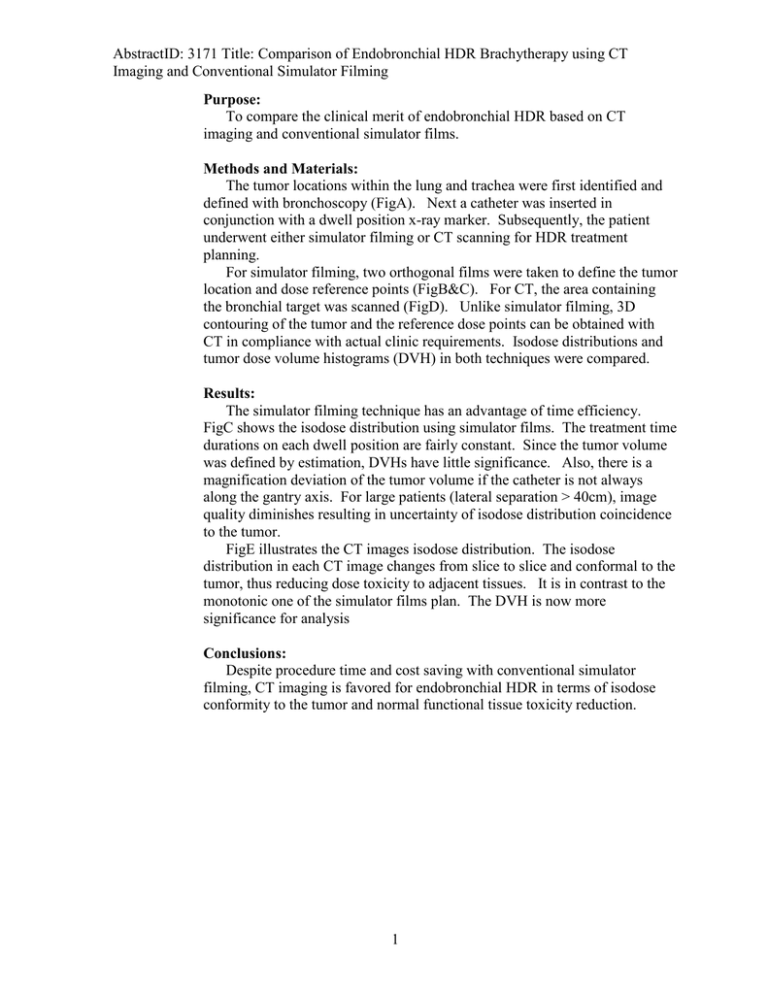AbstractID: 3171 Title: Comparison of Endobronchial HDR Brachytherapy using CT
advertisement

AbstractID: 3171 Title: Comparison of Endobronchial HDR Brachytherapy using CT Imaging and Conventional Simulator Filming Purpose: To compare the clinical merit of endobronchial HDR based on CT imaging and conventional simulator films. Methods and Materials: The tumor locations within the lung and trachea were first identified and defined with bronchoscopy (FigA). Next a catheter was inserted in conjunction with a dwell position x-ray marker. Subsequently, the patient underwent either simulator filming or CT scanning for HDR treatment planning. For simulator filming, two orthogonal films were taken to define the tumor location and dose reference points (FigB&C). For CT, the area containing the bronchial target was scanned (FigD). Unlike simulator filming, 3D contouring of the tumor and the reference dose points can be obtained with CT in compliance with actual clinic requirements. Isodose distributions and tumor dose volume histograms (DVH) in both techniques were compared. Results: The simulator filming technique has an advantage of time efficiency. FigC shows the isodose distribution using simulator films. The treatment time durations on each dwell position are fairly constant. Since the tumor volume was defined by estimation, DVHs have little significance. Also, there is a magnification deviation of the tumor volume if the catheter is not always along the gantry axis. For large patients (lateral separation > 40cm), image quality diminishes resulting in uncertainty of isodose distribution coincidence to the tumor. FigE illustrates the CT images isodose distribution. The isodose distribution in each CT image changes from slice to slice and conformal to the tumor, thus reducing dose toxicity to adjacent tissues. It is in contrast to the monotonic one of the simulator films plan. The DVH is now more significance for analysis Conclusions: Despite procedure time and cost saving with conventional simulator filming, CT imaging is favored for endobronchial HDR in terms of isodose conformity to the tumor and normal functional tissue toxicity reduction. 1



